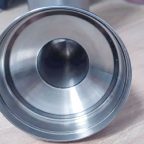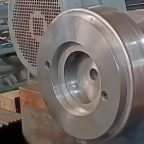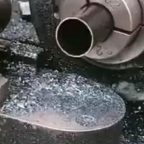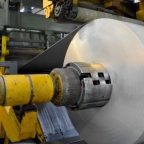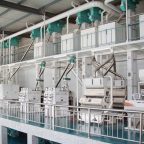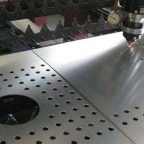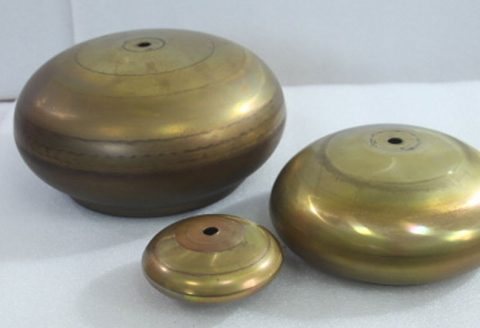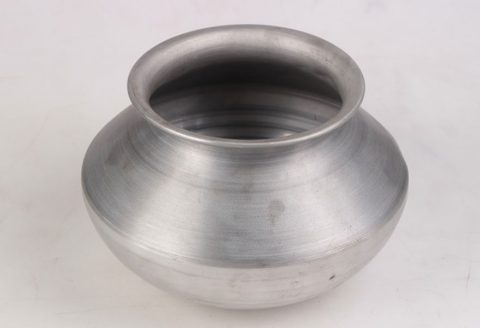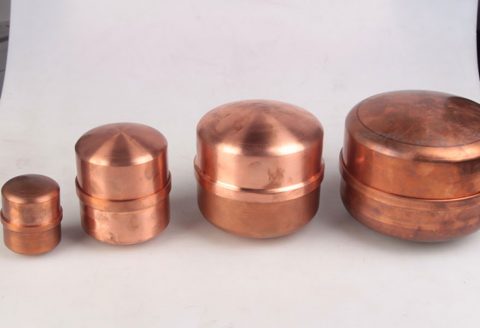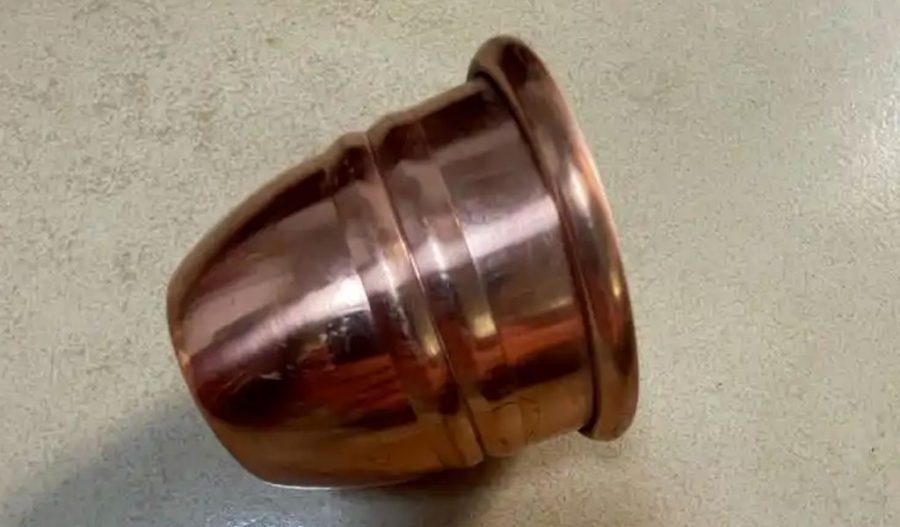
Metal spinning, also known as spin forming or metal turning, is a metalworking process used to create axially symmetric parts, including spheres, hemispheres, and other rounded geometries. Metal spun spheres, in particular, have emerged as a cornerstone in various industries due to their versatility, cost-effectiveness, and ability to meet stringent performance requirements. This article explores the technical, economic, and practical aspects of metal spun spheres, detailing their manufacturing process, material properties, applications, and advantages over alternative forming methods. By leveraging advanced engineering principles and modern manufacturing technologies, metal spun spheres offer a compelling solution for industries ranging from aerospace to decorative arts.
1. Introduction to Metal Spinning
Metal spinning is a cold-forming process that involves rotating a metal disc or tube, known as a blank, at high speed while applying localized pressure with a roller or tool to shape it against a mandrel. The process is particularly suited for producing seamless, rotationally symmetric components such as spheres, cones, and cylinders. Unlike other metal forming techniques, such as stamping, casting, or forging, metal spinning requires minimal tooling and produces less material waste, making it an environmentally and economically favorable option.
Spheres, as three-dimensional objects with uniform curvature, are among the most challenging shapes to produce accurately. However, metal spinning excels in creating spherical components due to its ability to incrementally deform metal into smooth, continuous surfaces. Metal spun spheres are used in applications requiring high structural integrity, aesthetic appeal, or specific functional properties, such as pressure vessels, lighting reflectors, and satellite components.
The versatility of metal spinning lies in its adaptability to various materials, sizes, and production volumes. From small, intricate hemispheres to large, industrial-scale spheres, the process accommodates a wide range of specifications. Furthermore, advancements in computer numerical control (CNC) technology have enhanced the precision and repeatability of metal spinning, making it a preferred choice for modern manufacturing.
2. The Metal Spinning Process
2.1. Principles of Metal Spinning
Metal spinning operates on the principle of plastic deformation, where a metal blank is shaped by applying controlled pressure while it rotates. The process typically involves the following steps:
- Blank Preparation: A flat or preformed metal disc, known as the blank, is selected based on the desired dimensions and material properties of the final sphere. The blank is usually circular and cut to a specific diameter to minimize waste.
- Mounting: The blank is clamped onto a rotating spindle, which is aligned with a mandrel—a pre-shaped form that defines the final geometry of the sphere.
- Spinning: As the blank rotates at high speed, a roller or tool applies localized pressure to gradually deform the metal over the mandrel. The roller follows a programmed path in CNC spinning or is manually guided in traditional spinning.
- Finishing: Once the desired shape is achieved, the spun sphere may undergo secondary processes such as trimming, polishing, or heat treatment to enhance its surface finish or mechanical properties.
The process can be performed at room temperature (cold spinning) or at elevated temperatures (hot spinning) for materials with low ductility or high strength, such as titanium or certain stainless steels.
2.2. Types of Metal Spinning
Metal spinning can be categorized into three main types, each suited for specific applications:
- Conventional Spinning: The blank is deformed over a mandrel to form the desired shape. This method is ideal for producing spheres and hemispheres with high precision and smooth surfaces.
- Shear Spinning: The metal is thinned as it is formed, reducing the wall thickness of the final component. Shear spinning is often used for lightweight spherical components in aerospace applications.
- Tube Spinning: A tubular blank is spun to create cylindrical or spherical shapes. This method is less common for spheres but can be used for specific designs.
Each type of spinning offers unique advantages in terms of material efficiency, structural integrity, and production speed, making metal spinning a versatile process for spherical components.
2.3. Equipment and Tooling
Modern metal spinning relies on advanced equipment, including CNC lathes, hydraulic presses, and specialized tooling. The mandrel, a critical component, is typically made from steel, aluminum, or composite materials and is designed to withstand the forces of spinning. Tooling costs for metal spinning are significantly lower than those for stamping or casting, as mandrels are relatively simple to produce and can be reused for multiple production runs.
CNC spinning machines have revolutionized the process by enabling precise control over roller paths, speeds, and pressures. This results in consistent wall thicknesses, smooth finishes, and the ability to produce complex geometries with tight tolerances. For example, CNC spinning can achieve tolerances as low as ±0.005 inches (±0.127 mm) for high-precision applications.
3. Materials for Metal Spun Spheres
The choice of material is a critical factor in the performance and cost-effectiveness of metal spun spheres. The process is compatible with a wide range of metals, each offering distinct properties suited for specific applications. The following sections detail commonly used materials, their properties, and their suitability for spinning.
3.1. Aluminum
Aluminum is one of the most popular materials for metal spinning due to its high ductility, low weight, and excellent corrosion resistance. Common alloys include:
- 1100-O: Offers approximately 60% elongation, making it highly formable and ideal for intricate spherical designs. It requires minimal annealing and is commonly used in decorative and aerospace applications.
- 3003-O: Provides a balance of strength and formability, with around 40% elongation. It is suitable for general-purpose spheres.
- 5052-O: Known for its corrosion resistance and moderate strength, this alloy is used in marine and industrial applications.
Aluminum’s recyclability and lightweight nature make it an environmentally friendly choice for spun spheres. Its ability to be polished to a high sheen also makes it popular for decorative applications.
3.2. Stainless Steel
Stainless steel, particularly grades in the 300 and 400 series, is valued for its strength, corrosion resistance, and durability. Common alloys include:
- 304 Stainless Steel: Offers good formability and corrosion resistance, making it suitable for food and beverage, medical, and chemical processing applications.
- 316 Stainless Steel: Provides superior corrosion resistance, ideal for marine and pharmaceutical environments.
- 430 Stainless Steel: A ferritic alloy with lower cost and moderate corrosion resistance, used in less demanding applications.
Stainless steel spheres often require higher spinning forces due to their strength, but the process can be optimized with hot spinning or hydraulic presses.
3.3. Copper and Brass
Copper and brass are highly formable metals with excellent thermal and electrical conductivity. Copper, with an elongation of around 45%, is ideal for applications requiring intricate detailing, such as decorative hemispheres or electrical components. However, it work-hardens quickly, necessitating frequent annealing during spinning. Brass, an alloy of copper and zinc, offers similar formability with enhanced aesthetic appeal due to its golden hue.
3.4. Exotic Metals
For specialized applications, exotic metals such as titanium, Inconel, and Hastelloy are used. These materials are challenging to spin due to their high strength and low ductility but offer exceptional performance in extreme environments. For example:
- Titanium: Used in aerospace and medical applications for its high strength-to-weight ratio and biocompatibility.
- Inconel: A nickel-based alloy suited for high-temperature and corrosive environments, such as turbine components.
- Hastelloy: Offers excellent resistance to chemical corrosion, used in petrochemical and nuclear industries.
Hot spinning is often required for these materials to reduce forming forces and prevent cracking.
3.5. Material Comparison Table
The following table compares the properties of common materials used in metal spinning for spherical components:
| Material | Elongation (%) | Strength (MPa) | Corrosion Resistance | Typical Applications | Spinning Suitability |
|---|---|---|---|---|---|
| Aluminum 1100-O | 60 | 90-120 | Excellent | Aerospace, decorative, consumer products | High (minimal annealing) |
| Aluminum 3003-O | 40 | 110-150 | Good | General-purpose spheres, industrial | High |
| Aluminum 5052-O | 25-30 | 190-230 | Excellent | Marine, industrial | Moderate |
| Stainless Steel 304 | 40-60 | 500-700 | Excellent | Food processing, medical, chemical | Moderate (hot spinning) |
| Stainless Steel 316 | 40-50 | 500-700 | Superior | Marine, pharmaceutical | Moderate (hot spinning) |
| Copper | 45 | 200-250 | Good | Decorative, electrical | High (requires annealing) |
| Brass | 40-50 | 300-400 | Good | Decorative, architectural | High |
| Titanium | 20-25 | 900-1100 | Excellent | Aerospace, medical | Low (hot spinning) |
| Inconel | 20-30 | 1000-1400 | Excellent | High-temperature, aerospace | Low (hot spinning) |
4. Advantages of Metal Spun Spheres
Metal spun spheres offer several advantages over alternative forming methods, including cost-effectiveness, versatility, and environmental benefits. These advantages are discussed in detail below.
4.1. Cost-Effectiveness
Metal spinning is renowned for its low tooling costs, which are typically 80-90% lower than those for stamping, casting, or forging. This is primarily due to the simplicity of the mandrel, which can be reused across multiple production runs. Additionally, the process allows for the use of lighter-gauge materials, reducing material costs without compromising structural integrity.
The ability to produce prototypes and low-to-medium volume runs without significant investment in tooling makes metal spinning an attractive option for custom or small-batch production. For high-volume production, CNC spinning ensures repeatability, further reducing per-unit costs. The elimination of secondary processes, such as polishing or deburring, also contributes to cost savings.
4.2. Versatility
Metal spun spheres can be produced in a wide range of sizes, from small components measuring 0.25 inches in diameter to large spheres exceeding 10 feet. This scalability makes the process suitable for diverse applications, from micro-components in electronics to large pressure vessels in industrial settings.
The process is also compatible with a variety of materials, as discussed earlier, allowing manufacturers to tailor the properties of the sphere to specific requirements. For example, aluminum spheres are used in lightweight aerospace applications, while stainless steel spheres are preferred in corrosive environments.
4.3. Material Efficiency and Environmental Benefits
Metal spinning produces minimal waste, as it uses preformed blanks that are precisely cut to size. Unlike casting or stamping, which may require trimming excess material, spinning deforms the blank directly into the desired shape. This reduces scrap and lowers material costs. Additionally, the ability to use recyclable materials like aluminum enhances the environmental sustainability of the process.
4.4. Structural Integrity
The cold-forming nature of metal spinning enhances the mechanical properties of the material through work hardening. This results in spheres with high strength and durability, suitable for demanding applications such as pressure vessels or structural components. The seamless construction of spun spheres eliminates weak points, such as welds or seams, that could compromise performance.
4.5. Comparison with Alternative Forming Methods
The following table compares metal spinning with other common metal forming methods for producing spherical components:
| Method | Tooling Cost | Material Waste | Production Volume | Precision | Applications |
|---|---|---|---|---|---|
| Metal Spinning | Low (80-90% less) | Low | Low to High | High (±0.005″) | Spheres, hemispheres, cones |
| Stamping | High | Moderate | High | Moderate | Automotive, consumer goods |
| Casting | High | High | Medium to High | Low | Industrial components, sculptures |
| Forging | High | Moderate | Medium to High | High | Aerospace, heavy machinery |
| Hydroforming | Moderate | Low | Low to Medium | High | Complex shapes, automotive |
Metal spinning stands out for its low tooling costs, minimal waste, and suitability for both prototyping and high-volume production.
5. Applications of Metal Spun Spheres
Metal spun spheres find applications across a wide range of industries due to their versatility, strength, and aesthetic appeal. The following sections highlight key applications, categorized by industry.
5.1. Aerospace
In aerospace, metal spun spheres are used for lightweight components such as radar calibration spheres, satellite dishes, and fuel tank components. Aluminum and titanium are preferred materials due to their high strength-to-weight ratios. The seamless construction of spun spheres ensures structural integrity under high-pressure or vacuum conditions, critical for space applications.
5.2. Petrochemical and Oil & Gas
Spherical pressure vessels and storage tanks are commonly produced using metal spinning. Stainless steel and corrosion-resistant alloys like Inconel are used to withstand harsh chemical environments. The ability to produce large-diameter spheres with consistent wall thicknesses makes spinning ideal for these applications.
5.3. Food and Beverage
Stainless steel spheres are used in food processing equipment, such as mixing vessels and storage tanks, due to their hygiene and corrosion resistance. The smooth surfaces produced by spinning reduce the risk of bacterial contamination, meeting stringent industry standards.
5.4. Decorative and Architectural
Copper, brass, and aluminum spheres are popular in decorative applications, including lighting reflectors, sculptures, and architectural elements. The ability to polish these materials to a high sheen enhances their aesthetic appeal. For example, spun copper hemispheres are used in high-end lighting fixtures to diffuse light effectively.
5.5. Medical and Pharmaceutical
In medical applications, titanium and stainless steel spheres are used for components such as prosthetic implants and pressure vessels for sterilization equipment. The biocompatibility and corrosion resistance of these materials ensure safety and reliability.
5.6. Automotive
Metal spun spheres are used in automotive applications for components such as fuel tank caps, exhaust system parts, and decorative trim. The process’s ability to produce lightweight, durable parts aligns with the industry’s focus on fuel efficiency and performance.
5.7. Other Applications
Additional applications include:
- Power Generation: Spherical components in turbines and generators.
- Water Management: Valves and fittings for water treatment systems.
- Consumer Products: Cookware, such as pots and pans, produced using aluminum or stainless steel spinning.
6. Technical Considerations in Metal Spinning
6.1. Design Considerations
Designing metal spun spheres requires careful consideration of several factors:
- Material Thickness: The initial blank thickness must account for thinning during spinning, particularly in shear spinning. Modern CNC controls help maintain uniform thickness.
- Tolerances: Precision requirements vary by application. Aerospace components may require tolerances of ±0.005 inches, while decorative spheres may allow ±0.060 inches.
- Surface Finish: The spinning process naturally produces smooth surfaces, but additional polishing or coating may be required for aesthetic or functional purposes.
- Mandrel Design: The mandrel must be robust enough to withstand spinning forces and precisely shaped to achieve the desired geometry.
6.2. Challenges and Solutions
Metal spinning is not without challenges. Common issues include:
- Material Thinning: Excessive thinning can weaken the sphere. This can be mitigated by optimizing roller paths and using CNC controls.
- Work Hardening: Materials like copper and stainless steel may harden during spinning, requiring annealing to restore ductility.
- Complex Geometries: While spinning excels at symmetric shapes, non-axisymmetric designs may require additional processes like hydroforming.
Advancements in CNC technology and material science have addressed many of these challenges, enabling the production of high-quality spheres with minimal defects.
7. Economic and Environmental Impact
7.1. Cost Analysis
The cost-effectiveness of metal spinning is driven by several factors:
- Low Tooling Costs: As noted, mandrels are significantly cheaper than dies used in stamping or casting.
- Material Efficiency: Minimal waste reduces material costs, particularly for expensive alloys like titanium or Inconel.
- Production Flexibility: The ability to produce prototypes or small batches without significant retooling lowers overall costs.
For example, a study by Helander Metal Spinning Company estimated that tooling costs for metal spinning are 80-90% lower than for stamping, resulting in significant savings for low-to-medium volume production.
7.2. Environmental Sustainability
Metal spinning aligns with sustainable manufacturing practices by:
- Reducing Waste: The use of preformed blanks minimizes scrap compared to casting or stamping.
- Using Recyclable Materials: Aluminum and stainless steel are highly recyclable, reducing the environmental footprint.
- Energy Efficiency: Cold spinning requires less energy than processes like casting, which involve melting metal.
These factors make metal spinning an attractive option for industries seeking to meet environmental regulations and sustainability goals.
8. Case Studies
8.1. Aerospace: Radar Calibration Spheres
A leading aerospace manufacturer required radar calibration spheres with precise sphericity and tight tolerances (±0.005 inches). Metal spinning was chosen over casting due to its ability to produce seamless aluminum spheres with minimal secondary processing. The use of CNC spinning ensured repeatability, and the low tooling costs allowed for cost-effective production of small batches. The resulting spheres met stringent performance requirements and reduced lead times by 30% compared to alternative methods.
8.2. Petrochemical: Pressure Vessels
A petrochemical company needed large-diameter stainless steel spheres for high-pressure storage tanks. Metal spinning was selected for its ability to produce seamless, corrosion-resistant spheres up to 10 feet in diameter. The process eliminated the need for welds, reducing the risk of leaks and improving safety. The project achieved a 25% cost reduction compared to welded fabrication methods.
8.3. Decorative: Lighting Reflectors
A lighting design firm sought custom copper hemispheres for high-end light reflectors. Metal spinning allowed for the production of seamless, polished hemispheres with a mirror-like finish. The process’s flexibility enabled rapid prototyping, allowing the firm to test multiple designs before finalizing the product. The resulting reflectors enhanced light diffusion and became a signature feature of the firm’s product line.
9. Future Trends in Metal Spinning
The metal spinning industry is evolving with advancements in technology and materials. Key trends include:
- Automation and Industry 4.0: Integration of IoT and AI in CNC spinning machines is improving process monitoring and quality control.
- Advanced Materials: The use of composites and hybrid materials in spinning is expanding the range of applications.
- Sustainability: Increased focus on recyclable materials and energy-efficient processes is driving innovation in spinning techniques.
- Additive Manufacturing Integration: Combining metal spinning with 3D printing for hybrid manufacturing is enabling the production of complex, lightweight spheres.
These trends are expected to further enhance the versatility and cost-effectiveness of metal spun spheres in the coming decades.
10. Conclusion
Metal spun spheres represent a pinnacle of manufacturing ingenuity, combining versatility, cost-effectiveness, and high performance. The metal spinning process offers unparalleled advantages, including low tooling costs, minimal material waste, and the ability to produce seamless, high-strength components. From aerospace to decorative arts, the applications of spun spheres are vast and varied, driven by the process’s adaptability to diverse materials and production volumes. As technology advances, metal spinning is poised to remain a cornerstone of modern manufacturing, delivering innovative solutions for industries worldwide.
Maximize Tooling and CNC Metal Spinning Capabilities.
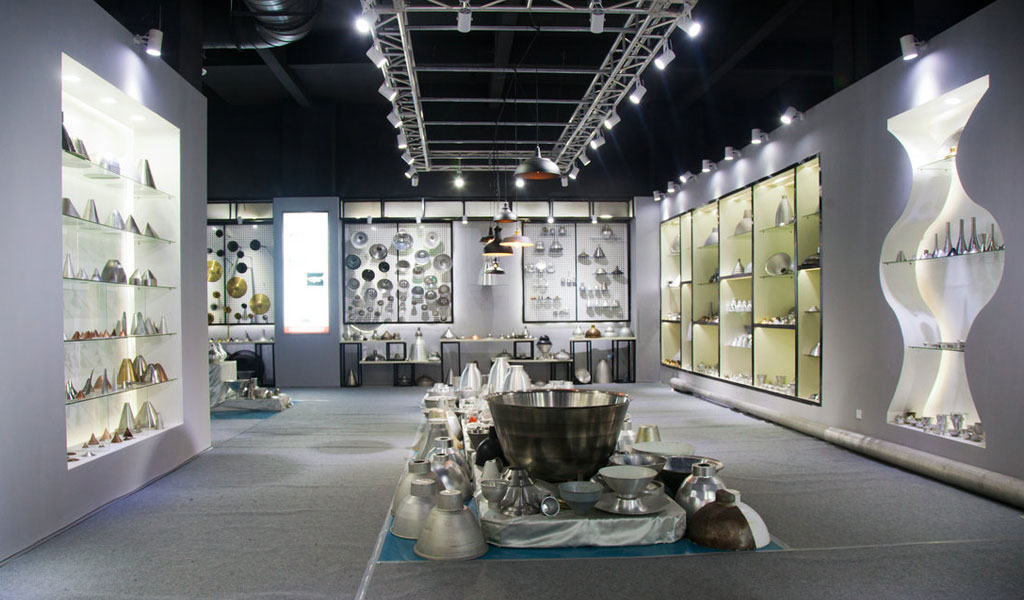
At BE-CU China Metal Spinning company, we make the most of our equipment while monitoring signs of excess wear and stress. In addition, we look into newer, modern equipment and invest in those that can support or increase our manufacturing capabilities. Our team is very mindful of our machines and tools, so we also routinely maintain them to ensure they don’t negatively impact your part’s quality and productivity.
Talk to us today about making a rapid prototype with our CNC metal spinning service. Get a direct quote by chatting with us here or request a free project review.
BE-CU China CNC Metal Spinning service include : CNC Metal Spinning,Metal Spinning Die,Laser Cutting, Tank Heads Spinning,Metal Hemispheres Spinning,Metal Cones Spinning,Metal Dish-Shaped Spinning,Metal Trumpet Spinning,Metal Venturi Spinning,Aluminum Spinning Products,Stainless Steel Spinning Products,Copper Spinning Products,Brass Spinning Products,Steel Spinning Product,Metal Spinnin LED Reflector,Metal Spinning Pressure Vessel,
